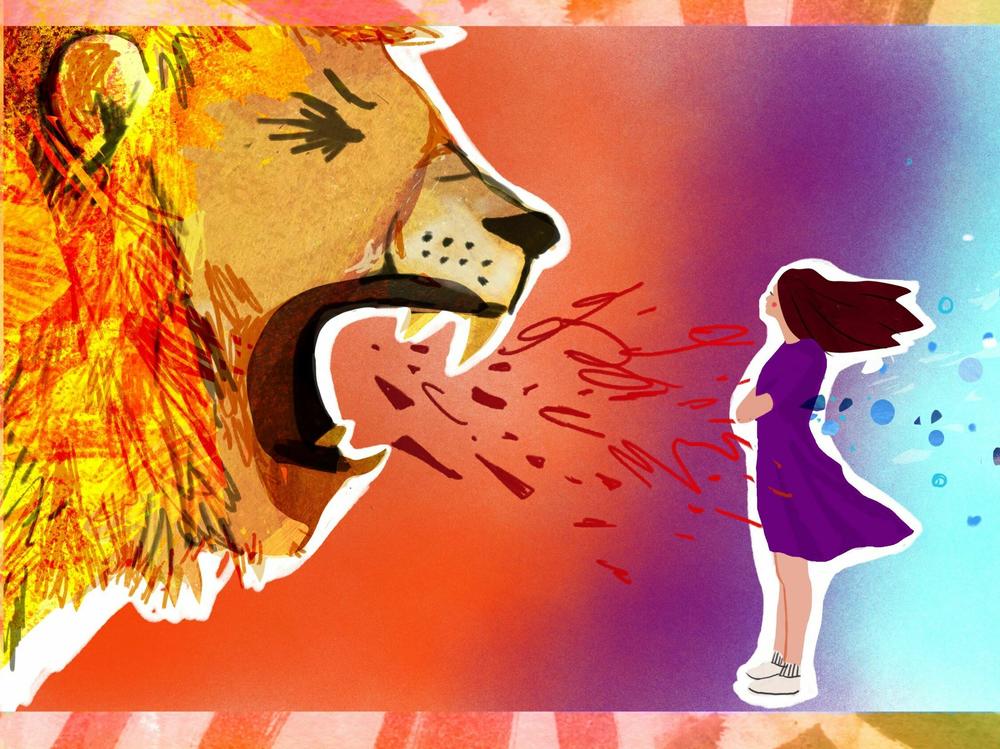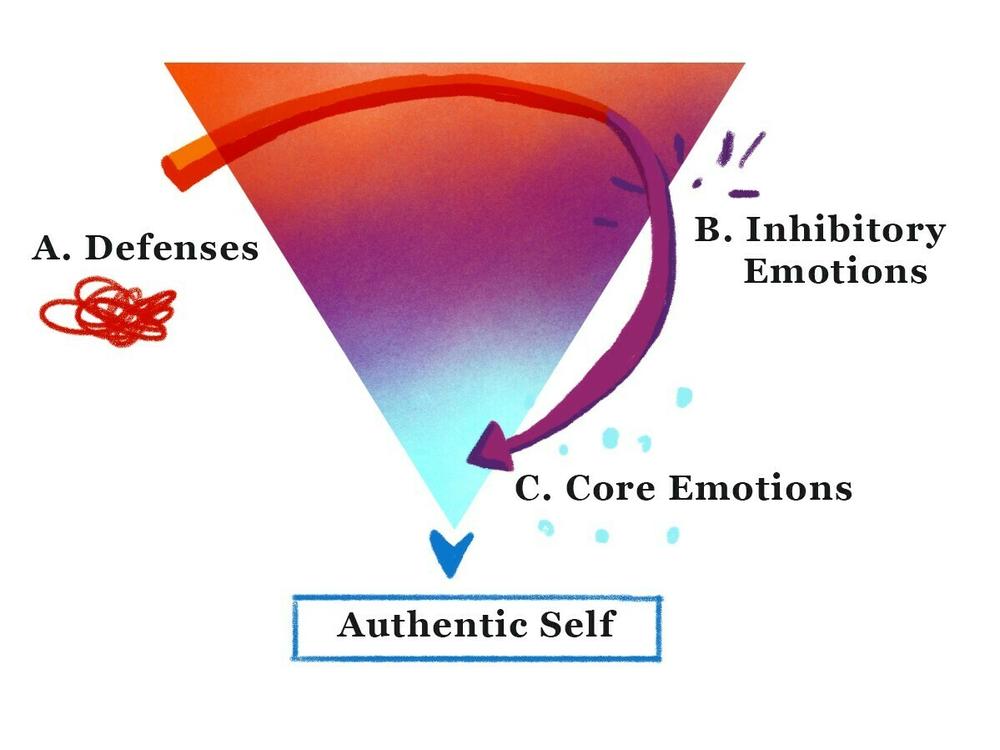Section Branding
Header Content
Feeling ragey? Don't bury your anger, process it. Here's how
Primary Content
It's 9 a.m. and your to-do list is a mile long. Before you tackle it, your partner criticizes you, and your teen greets you with an eye roll. Meanwhile, you see a news clip about war or politics that pushes you over the edge.
If you often feel like you're boiling over, you're not alone. In fact, 23% of people surveyed in a Gallup Poll admitted feeling enraged a lot in 2022. This makes sense since there's plenty of stress to spark outrage.
While anger is common, many of us have a conflicted relationship with it. So often we're told that expressing our outrage makes us a "hothead" or means we have "issues." In other words, we're taught to feel bad about our anger. This is why it can be a revelation to learn that feeling angry isn't a character flaw — in fact, it has a biological purpose. Our emotions never hurt anyone. It's what we do with them that matters.
Here's a step-by-step process for working with feelings of anger that we — a psychotherapist and a psychologist — share with our patients. As research shows, understanding your anger and what it's trying to tell you can help you process it in healthy ways and use your anger constructively.
Understand your anger's purpose
If you ever lash out when you're angry — or numb the feelings with alcohol — you probably know that actions propelled by unchecked and unexamined anger can do harm. But the emotion itself is not our foe when it is channeled wisely. Anger is a biological program that's not only adaptive but necessary for survival. In fact, anger's job is to protect us.
But there are two types of anger: core and defensive. Core anger is a response to a perceived violation. This is why threats of physical violence, character assaults, and feeling wronged can evoke it. Without it, we wouldn't be able to speak up when someone makes a racist remark or set a boundary when a co-worker is rude.
In contrast, defensive anger is a cover story. This type of anger serves to protect us from experiencing other emotions. For example, we've worked with patients who used anger to hide their shame, fear of dying, grief, or terror that a loved one would abandon them.
Learn to move through anger with the Change Triangle
Unlike being taught your ABCs, our society doesn't yet teach us about emotions (But they should!). As psychotherapists, we know that anyone can learn to experience anger in healing ways, and you don't even need to be in therapy to do so.
We want to introduce you to a practical tool for emotional health. It's called the Change Triangle and was originally developed by David Malan for psychotherapists, and adapted by me, Hilary for general use.
The idea is that we can get cut off from our core anger — or other strong emotions — and get stuck in less healthy responses. The Change Triangle guides you from your defenses to experience your core emotions so you can ultimately release the anger.
Next time something annoys you or you find yourself in a blind rage, look at the diagram below and try to identify which corner of the Change Triangle you identify your mental state:
A) If we aren't able to tolerate the experience of anger and work with it, we will use protective defenses to avoid it. Sometimes we turn our anger toward ourselves and develop symptoms like drug and alcohol abuse, over- or under-eating, depression, and ruminating.
Alternatively, we may "act out" or externalize our anger by storming out of a room, canceling someone, or punching a wall. These actions are also defenses against the internal experience of anger.
B) Feeling inhibitory emotions like anxiety, guilt, or shame, which blocks anger. These emotions protect us and others from our anger. For example, maybe someone offends you at work, and it fills you with anxiety. Or you constantly feel guilty around your family who never treated you well. In both cases, core anger lies beneath awaiting validation.
C) Fully experiencing and owning your core anger. You know you are experiencing anger directly when you can name it, validate it, sense it in the body, know who it is directed toward, and start to recognize the impulse.
Once we are able to acknowledge our anger, we can work to release its charge so our nervous system returns to a calmer resting state. Naming and processing anger will reduce symptoms of depression and anxiety, which are often the result of blocked and buried emotions. And it allows you to work with your anger so it's expressed in constructive ways.
4 steps to validate and release core anger
When something makes your blood boil, try not to judge yourself. Instead, approach yourself with a stance of curiosity and compassion and try the following things:
Step 1: Honor your anger by naming it
Ignoring our emotions only makes them roar louder and come out sideways, but making space for anger can help us experience it so we feel calmer.
For example, our patients express anger in myriad ways. They may declare their rage or apologize for it. Sometimes, they express it nonverbally by breaking eye contact or furrowing their brow.
Therefore, if you're upset because there's so much strife in the world, or mad because you must spend another spring break with your in-laws, try naming your emotions by saying out loud or to yourself, "I am angry!" and see how it feels.
Research shows that giving language to our internal experience helps regulate the nervous system and can foster a sense of calm and balance.
Step 2: Sense it physically
One way to get in touch with this emotion is by becoming an "anger detective" and to identify where it shows up in your body. Perhaps your temperature rises, or there's tension in your core, or you feel an impulse to scream or kick.
Next time you're angry, try slowly scanning your body from head to toe. Notice any sensations that you're experiencing and try to slow down and befriend them. Encourage yourself to be curious, compassionate and to stay with the sensations and breathe.
Step 3: Notice anger's impulse
Once you have recognized and named your anger, you can work with it. For example, if anger makes your fists clench, ask yourself this question: "If my fists could speak, what would they say or do?"
Often, our patients answer this question by saying, "I'd like to hit the person who hurt me?" or "I'd like to smack them in the face!"
As jarring as this sounds, it's nothing to feel ashamed of, nor does it make you a terrible person. This impulse is a biological response. It's anger's way of trying to protect you, and it's not your fault or under conscious control.
Step 4: Release core anger with a "rage portrayal"
If you were a fly on the wall in one of our sessions, you would hear us say things like, "Let's honor what your anger wants you to do." Now, this isn't some woo-woo psychology hack found on the internet. The intervention is based in science, which confirms that you can use your imagination to help move through your emotions and heal.
Here's how to try it. We recommend starting with a situation that makes you moderately angry or annoyed.
Close your eyes and bring to mind the person or situation that's angering you. Next, notice the sensations of anger that arise in your body. Breathe deeply, staying with the sensations. After a while, the impulse of your anger will show itself. Often, it's a desire to "speak your truth" or physically retaliate. Staying connected to the physical sensation of the impulse, let the fantasy play out, like a movie, showing what it wants to do to the person who hurt or angered you. Continue until you feel the anger subside or you notice a shift in your emotional state.
Remember this is not a dress rehearsal for action — you're not really going to punch anyone! It's a way to help you release this energy so that it doesn't hurt you or others. Here's a place to learn more about this process.
Make good use of your anger
Once you recognize and experience your anger, you can think more clearly again to make good use of it.
Anger can help us set boundaries and assert our needs. For instance, if your family isn't pitching in enough at home, you can ask them directly for more help. And if someone is insulting your political views (or your cooking), you can firmly ask them to stop.
If you suspect you have unaddressed anger from your childhood that is negatively affecting your life today, it's a great idea to seek support. With a trained therapist, pent-up anger can be released in a safe way, helping you feel better.
When we no longer fear our anger (even when it feels uncomfortable), we're in a better place to work with it. Like physical exercise, it's an ongoing practice. Processing and honoring our emotions improves our relationships and helps us live healthier lives.
Juli Fraga is a psychologist and writer in San Francisco. Hilary Jacobs Hendel, LCSW is a certified psychoanalyst and AEDP psychotherapist and the author of It's Not Always Depression.


